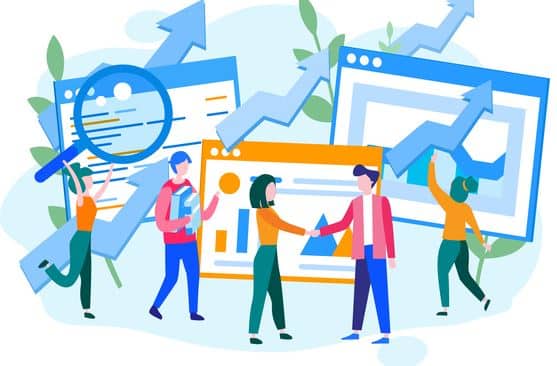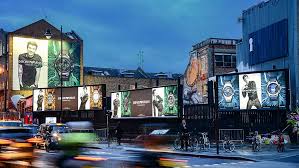Did you know that over 70% of online customers will abandon their carts by 2021? Why would a customer spend hours browsing a store and adding things to their cart only to close the page at the last second? But here’s the thing: knowing your clients’ thinking can be exceedingly difficult. While it is impossible to predict the customer journey with 100% accuracy, customer and user experience (UX) journey mapping will help you understand as much as feasible. This post will explain everything you need to know about a customer journey map, how to create it, the funnel, map stages, and plan. Let’s get to it.
What is a Customer Journey Map?
A customer journey map or plan is a graphical representation of a client’s interaction with your company. These images depict the tale of how a client progresses through and experiences each phase of interaction. Touchpoints and moments of truth, as well as potential consumer reactions such as dissatisfaction or misunderstanding, should be included in your customer journey map or plan, as should any actions you want the customer to take.
Customer journey maps are frequently built on a timeline of events, such as a customer’s first visit to your website and the path they take to their first in-product experience, purchase, onboarding emails, cancellation, and so on.
Your customer journey maps may need to be customized for your company or product, but the best approach to finding and developing these phases is to talk to your consumers. Investigate your target audiences to see how people make decisions, make purchases, and so on. A customer map will not guide you to success unless you have a solid understanding of your customers and their demands. A well-constructed and studied customer journey map or plan, on the other hand, can provide you with insights to significantly improve your company’s customer experience.
The Benefits of Customer Journey Mapping
Customer journey mapping is an effective method for gaining insights into your customer experience, achieving company objectives, and developing resilience in a changing market. Understanding a customer’s journey across your entire organization, on the other hand, does far more than raise revenue. It teaches you how to be consistent in giving a pleasant customer experience and retaining client loyalty.
This has been increasingly visible in recent years, as, in addition to boosting marketing, customer journey maps have emerged as a vital tool for understanding changing buyer behavior. During the pandemic, one in every three firms used customer journey maps to help them navigate the changing situation.
When done correctly, customer journey mapping can assist in:
- Increase consumer engagement by optimizing your channels.
- Identify and optimize CX moments of truth.
- Remove ineffective touchpoints.
- Shift from a company-focused to a customer-focused mindset.
- Break down departmental silos and close interdepartmental gaps.
- Marketing initiatives tailored to certain customer personas should be targeted.
- Recognize the circumstances that may have resulted in inconsistencies in existing quantitative data.
- To promote staff accountability, assign ownership of multiple client touchpoints.
- Make it feasible to calculate the return on investment for future UX/CX investments.
- Following the steps indicated above, customer mapping can put your company on a new path to success.
Customer Journey Map Stages
The purpose of this data collection is not only to collect data for the sake of collecting it but to gain insights that will help you understand how your consumers experience their journeys and identify any bottlenecks along the route.
It’s also worth noting that most client journeys aren’t always linear. Buyers frequently take a back-and-forth, cyclical, multi-channel journey. Consider the stages in the customer journey map or plan.
#1. The Buying Process
To precisely track your customer’s path from first to last interaction, you’ll want to pull data from all relevant sources (prospecting tools, CMS, behavior analytics tools, etc.).
However, you may keep it simple by generating broad categories and mapping them horizontally using the traditional buying journey process steps – awareness, deliberation, and decision.
#2. User Actions
This section of the customer journey map or plan, describes what a consumer performs at each stage of the purchasing process. Customers, for example, may download ebooks or participate in educational webinars during the problem-awareness stage. Essentially, you’re investigating how your clients act and move through each stage of their journey.
#3. Emotions
Whether the aim is great or small, remember that your customers are solving a problem. That suggests they’re probably experiencing some sort of emotion, such as relief, happiness, enthusiasm, or worry.
Including these feelings on the journey, the map will help you detect and manage negative emotions at various times along the way.
#4. Pain Points
There is a pain point that causes every bad emotion. Including pain points in your customer journey map or plan will help you determine which of the stages your consumer is feeling unpleasant emotions and why.
#5. Solutions
As the final component of your customer journey map, solutions are where you and your team can brainstorm potential methods to improve your purchasing process so that customers experience fewer pain points along the way.
What is a Touchpoint in a Customer Journey Map?
A touchpoint in a customer journey map or plan is a point at which your consumer can create an opinion about your company. Touchpoints can be found anywhere your company comes into direct contact with a potential or existing customer.
A display ad, an interaction with a staff, a 404 error, and even a Google review are all examples of consumer touchpoints. Because your brand extends beyond your website and marketing materials, you must include several sorts of touchpoints in your customer journey map because they can reveal chances for improvement in the purchasing path.
How to Create a Customer Journey Map
Customer journey maps can grow confusing if they are not kept focused. Although you can target several personas, just research and visualize one persona and one client situation at a time. You may develop a client journey map by following these steps:
#1. Set goals
It will be difficult to establish whether your customer journey map will have a tangible impact on your consumers and your organization without a goal. You will almost certainly need to identify current and prospective buyers so that you can set goals for each stage of their journey.
Consider collecting your company’s main stakeholders, many of whom will likely touch multiple aspects of the customer experience. Cross-functional coordination is required to define a clear and attainable goal. Gather unique viewpoints and insights on each stage of the current customer journey, as well as where improvements are needed and how those improvements will be quantified.
#2. Conduct Persona Research
Fill in as much detail as possible about the persona on which your customer journey map is built. Depending on your company’s maturity, you may just have a few records, reports, or other pre-existing data about the target persona. You might use your preliminary results to create a rough draft of what you believe the customer journey will look like.
The most valuable data, however, comes from genuine consumers or prospective customers who have interacted with your business. Gather useful client information in one of the following ways:
- Hold interviews.
- Speak with personnel who have regular contact with customers.
- Send an email with a survey to current users.
- Examine customer service and complaint logs.
- Take excerpts from call center recordings.
- Monitor social media conversations regarding your organization.
- Make use of web analytics.
- Collect Net Promoter Score (NPS) information.
#3. Establish Customer Touchpoints
The majority of your customer journey map is made up of consumer touchpoints. They are the means and locations through which customers interact with and experience your brand. When researching and mapping out your touchpoints, make sure to include information about action, emotion, and potential challenges.
The quantity and type of touchpoints on your customer journey map will vary depending on your industry. After you’ve identified your touchpoints, you can begin organizing them on your customer journey map.
#4. Map the Current State
Create what you think to be the current state of the customer journey or customer experience. Start organizing your data and touchpoints with a visual workspace like Lucidchart. Put the correct content ahead of aesthetics. To ensure accuracy, solicit input from stakeholders and create your customer journey map collectively.
Again, there is no “correct” way to create your customer journey map, but include the touchpoints, activities, channels, and assigned ownership of a touchpoint (sales, customer service, marketing, etc.) for each phase along the trip timeline. Then, change the images, colors, and shapes in your diagram design to better visualize the various events, emotions, transitions, and so on.
#5. Map Future States
Your map will most likely highlight some gaps in your CX, information overlap, poor transitions between phases, and significant pain points or impediments for customers now that you’ve seen the current state of the customer journey.
What is a Customer Journey Funnel?
A customer journey funnel, like a customer funnel, focuses on the path that customers travel from initial awareness to final product purchase. While the customer journey map represents the buyer’s experience, the funnel examines the same process from the company’s perspective.
The customer journey funnel can assist firms in tracking how well they are gaining and converting customers into paying customers. The customer journey funnel can also help uncover possible difficulties in the sales process and areas for development.
How to Create Your Customer Journey Funnel?
Now that you have a fundamental grasp of this type of customer journey funnel, let’s talk about how to build it up for your company. To properly create a consumer journey map, the following steps must be taken:
#1. Define your goals
It is impossible to stress the importance of identifying your goals before going on this path. This is a crucial step to take before moving forward. You must ask yourself what you want your strategy to achieve, what you want the channel to do, what ultimate outcome you consider a success, and whether you want to promote brand loyalty, drive repeat purchases, or attract new customers. These questions direct the plan and the subsequent phases.
#2. Create a map
After you’ve established your objectives, use a map to trace the customer’s current trip. Understanding what happens at each stage of the funnel and putting measures in place to encourage consumers to migrate to the bottom of the funnel are required.
#3. Establish consumer drop-off points
You must determine where clients are leaving the funnel. This can be accomplished by keeping track of the conversion point and consumer feedback. Find the places that require improvement and compare them to the various stages where buyers drop off while mapping your customer journey map or funnel. If they are in sync, then there is room for improvement.
#4. Create a strategy to curb drop-offs
Once you’ve identified where customers are leaving the funnel, you must design a strategy to address these drop-offs. This data can spark ideas for improving the customer experience (learn how to measure and improve your CX here), such as developing fresh and relevant content, boosting customer support, or revamping your website to make it more user-friendly.
It may also help you appreciate the need of improving your marketing strategies in order to generate more interest in your products.
#5. Evaluate results
Once you’ve developed a strategy, you must put it into action to see how it works. It is critical to track the results of your funnel and make the required changes. This includes analyzing your conversion rates, consumer feedback, and other information.
#6. Repeat
The most effective strategy to develop your trip map is to track results and make modifications over time. There is always space for improvement and optimization, and the process becomes more straightforward as time goes on.
What are the 7 Steps to Map the Customer Journey?
The following are the 7 Easy Steps to Creating a Customer Journey Map:
- Set a clear goal for the map.
- Define your personalities and emphasize your target clients.
- Define the stages and goals for each customer map journey.
- Make a list of touchpoints.
- Collect data and comments from customers.
- Determine the sources of pain and friction.
- Determine where you can improve.
What are the 5 Stages of Customer Journey?
The five steps of your customer’s purchasing experience are as follows:
- Awareness.
- Consideration.
- Purchase.
- Retention.
- Advocacy.
How do you Run a Customer Journey Map?
To create a customer journey map, follow the steps below:
- Step 1: Create a Buyer persona.
- Step 2: Determine Your Ideal Customer.
- Step 3: Create a list of customer touchpoints.
- Step 4: Determine Customer Actions
- Step 5: Recognize Your Available Resources.
- Step 6: Analyzing The Customer Journey.
- Step 7: Take Commercial Action.
What are the 4 As of Customer Journey?
The customer journey is often divided into four stages: awareness, consideration, choice, and loyalty. Marketers have unique difficulties and opportunities at each level.
What are the 4 Es of Customer Experience?
The 4Es are experiences that offer Educational, Esthetic, Escapist, and Entertainment to the business. The four experiences differ depending on whether the client participates actively or passively, as well as their absorption or immersion in the event.
What are the six 6 Stages of the Customer Experience Lifecycle?
The customer experience lifecycle has six stages: awareness, engagement, purchase, retention/loyalty, growth, and advocacy.
What are the Key Components of the Customer Journey Map?
A customer journey map includes personas, scenarios and expectations, timelines/phases, emotions/mindsets, actions, and possibilities.
What are the Three Phases of the Customer Journey?
The three stages are as follows: When a customer first learns about a company or product, this is referred to as awareness. Consideration: When a customer expresses an interest in a company or product. Conversion occurs when a customer decides to purchase a product or service.
Conclusion
Noe, you have all of the necessary data for a client journey map. Don’t let the prospect of a poor client experience keep you awake at night. Understand the present state of the customer journey with your company and make the necessary changes to attract and retain customers.
Related Articles
- Buyer’s Journey: Meaning, Stages & How to Implement in Sales Process
- BUSINESS PROCESS MAPPING TOOLS: Uses, Free Tools & Guide
- Stakeholder Mapping: Guide to the Mapping Tool for Effective Stakeholder Management
- CUSTOMER JOURNEY: Meaning and How to Use the Maps to Create a Unique Customer Experience
- SALES FUNNEL STAGES: What Is It, Salesforce, B2B & Template.
- MARKETING ANALYSIS: Definition, Top Tools, SWOT, Report & Guide






